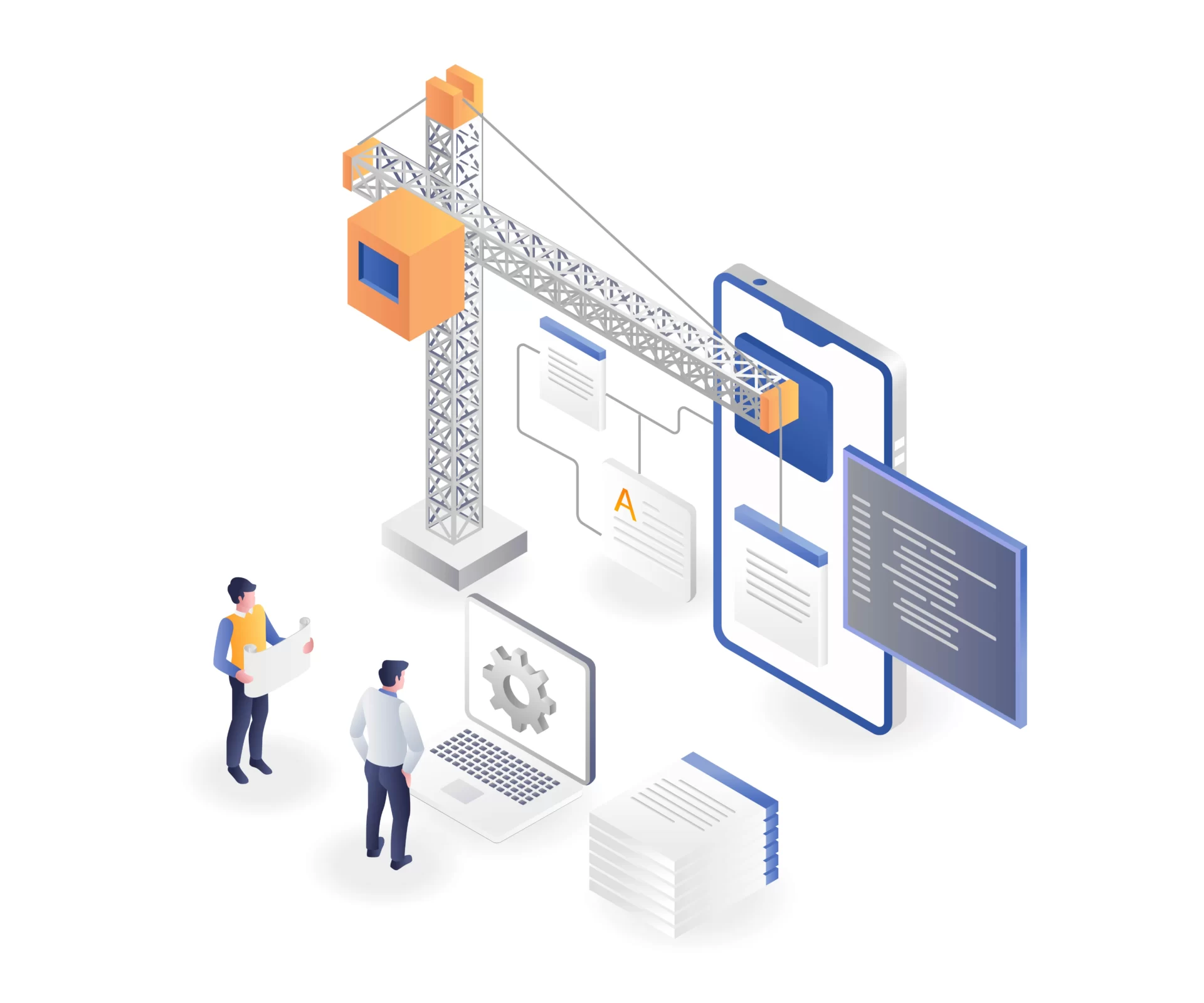As the digital landscape continues to evolve, understanding and implementing effective application architectures becomes increasingly vital for businesses and developers alike. This comprehensive guide dives deep into web app design patterns, modern application architectures, selecting the right web app architecture, and scaling web applications to help you stay ahead of the curve.
I. Introduction to Application Architectures
A. Importance of web application architecture
Application architectures play a critical role in ensuring the stability, scalability, and maintainability of web applications. A well-designed architecture can improve performance, enhance user experience, and simplify the development process. With an ever-growing number of users relying on web applications for various purposes, mastering the art of creating robust application architectures is more important than ever.
B. Key components of application architectures
Web application architectures are composed of several key components, including the frontend, backend, databases, and APIs. By understanding how these components interact, developers can create efficient and secure web applications that cater to the specific needs of their users and businesses.
II. Web App Design Patterns
A. Model-View-Controller (MVC)
One of the most popular design patterns, the Model-View-Controller (MVC) architecture, separates an application into three main components: the model, the view, and the controller. This separation of concerns enables developers to easily manage and maintain their web applications, leading to improved productivity and code quality.
B. Model-View-ViewModel (MVVM)
Model-View-ViewModel (MVVM) is another common design pattern that aims to simplify the development of complex user interfaces. Similar to MVC, MVVM separates the application into distinct components, but with a focus on data binding between the view and the view model. This pattern promotes better maintainability and testability of the codebase.
C. Model-View-Presenter (MVP)
Model-View-Presenter (MVP) is a derivative of the MVC pattern that emphasizes the presenter as the intermediary between the view and the model. This design pattern facilitates test-driven development and helps developers build more modular, scalable, and reusable web applications.
D. Comparing design patterns: Pros and cons
Each design pattern has its strengths and weaknesses, making it crucial for developers to carefully consider their options when choosing the right approach. By comparing the pros and cons of various design patterns, you can better align your chosen architecture with your project’s specific requirements and goals.
III. Modern Application Architectures
A. Microservices
Microservices architecture is a modern approach that breaks a web application into small, independent services. Each microservice is responsible for a specific functionality and communicates with other services through APIs. This architectural style promotes agility, scalability, and resilience, making it an increasingly popular choice for large-scale applications.
B. Serverless computing
Serverless computing is a paradigm that allows developers to build and deploy applications without managing the underlying infrastructure. By leveraging cloud-based services, developers can reduce operational costs, improve scalability, and accelerate time-to-market. Serverless computing is particularly well-suited for event-driven applications and functions with fluctuating workloads.
C. Containerization and orchestration
Containerization involves packaging an application and its dependencies into a single, portable unit called a container. This approach simplifies deployment and ensures consistency across various environments. Popular containerization tools include Docker and Kubernetes, which provide robust orchestration capabilities for managing and scaling containerized applications.
D. Progressive Web Applications (PWAs)
Progressive Web Applications (PWAs) combine the best of both web and mobile app experiences, delivering a high-performance, responsive, and secure user experience across devices. PWAs can be installed on users’ devices, work offline, and leverage native device features, making them a compelling option for businesses looking to enhance their web presence.
IV. Choosing the Right Web App Architecture
A. Factors to consider when selecting an architecture
Choosing the right web app architecture depends on various factors, including project size, scalability requirements, performance goals, and development team expertise. Carefully considering these factors will help you make an informed decision that aligns with your business objectives and provides a solid foundation for your application’s success.
B. Aligning architecture with business goals
Aligning your application architecture with your business goals is essential for achieving long-term success. Determine the key performance indicators (KPIs) that matter most to your organization, such as user engagement, conversion rates, or system uptime, and select an architecture that supports those objectives.
C. Assessing your team’s skills and resources
Evaluating your development team’s skills and resources is crucial when selecting a web app architecture. Consider factors like team size, expertise in specific technologies or frameworks, and available resources to ensure that your chosen architecture is achievable and sustainable.
V. Scaling Web Applications
A. Horizontal and vertical scaling strategies
Scaling web applications involves increasing their capacity to handle growing user demands. There are two primary scaling strategies: horizontal scaling, which adds more servers or instances to distribute the load, and vertical scaling, which increases the resources of existing servers. Both strategies have their advantages and limitations, and the choice depends on your application’s specific requirements.
B. Load balancing and caching techniques
Load balancing and caching are essential techniques for optimizing web application performance and ensuring high availability. Load balancing distributes traffic across multiple servers, while caching stores frequently used data in memory for faster retrieval. Implementing these techniques effectively can significantly improve user experience and application performance.
C. Monitoring and optimizing performance
Regularly monitoring and optimizing your web application’s performance is crucial for maintaining a high-quality user experience. Utilize performance monitoring tools to identify bottlenecks, optimize resource usage, and ensure that your application architecture is meeting your business goals.
VI. Conclusion
A. Embracing the ever-evolving world of application architectures
As the digital landscape continues to evolve, it is vital for businesses and developers to stay up-to-date with the latest trends in application architectures. Embrace new technologies, adapt to changing user expectations, and remain open to continuous learning to ensure your web applications remain competitive and relevant.
B. Continuously learning and adapting to stay competitive
Adopting a mindset of continuous learning and adapting is essential for success in the world of web application development. As you gain experience and expertise in various design patterns, modern application architectures, and scaling strategies, your ability to create robust, scalable, and maintainable web applications will only improve.

Frequently Asked Questions
1. What is the difference between MVC, MVVM, and MVP?
MVC, MVVM, and MVP are design patterns that help organize code in web applications. MVC (Model-View-Controller) separates an application into the model, view, and controller, promoting maintainability and testability. MVVM (Model-View-ViewModel) is similar to MVC but focuses on data binding between the view and the view model, enhancing the separation of concerns. MVP (Model-View-Presenter) emphasizes the presenter as an intermediary between the view and the model, facilitating test-driven development and modularity.
2. What are the benefits of using a microservices architecture?
Microservices architecture offers several benefits, including improved agility, scalability, and resilience. By breaking a web application into small, independent services, developers can easily update, deploy, and scale individual components without affecting the entire system. This modular approach promotes faster development cycles and enables better fault isolation.
3. What is the role of containerization in web application architectures?
Containerization is the process of packaging an application and its dependencies into a single, portable unit called a container. Containers simplify deployment, improve consistency across environments, and make it easier to manage and scale applications. Popular containerization tools include Docker and Kubernetes, which provide robust orchestration capabilities for managing containerized applications.
4. How do I choose the right scaling strategy for my web application?
Choosing the right scaling strategy depends on your application’s specific requirements and goals. Horizontal scaling involves adding more servers or instances to distribute the load, while vertical scaling increases the resources of existing servers. Consider factors like cost, performance, and infrastructure constraints when selecting the appropriate scaling strategy for your web application.
5. How can I optimize my web application’s performance?
Optimizing web application performance involves implementing techniques such as load balancing, caching, and code optimization. Utilize performance monitoring tools to identify bottlenecks and optimize resource usage. Regularly review and update your application architecture to ensure it aligns with your business goals and delivers a high-quality user experience.
As you navigate the world of application architectures, remember that the key to success lies in understanding the various design patterns, staying up-to-date with modern application architectures, and adapting to new technologies and trends. By continually learning and refining your skills, you will be better equipped to create robust, scalable, and maintainable web applications that meet the ever-evolving needs of your users and business.

